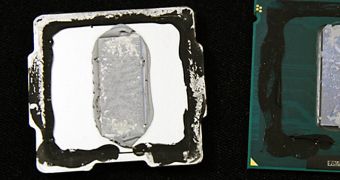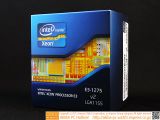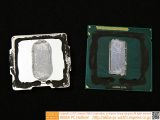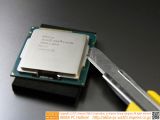Cooling performance is very important for the server market and being able to safely cool you servers without having to keep the server room temperature down to a low 16 degrees Celsius could mean considerable reductions on your power bill.
Unfortunately, this is not so easy when using Intel’s new Ivy Bridge-based Xeon E3 processors.
Our readers might remember that Intel received a lot of criticism for using mediocre quality TIM (thermal interface material) to perfect the contact between the CPU die and the integrated heatspreader (IHS).
This manufacturing decision led to much higher working temperatures for Intel’s Ivy Bridge CPUs and lower cooling performance.
This move won’t actually put the processor in any danger, but for the user there will be many diverse disadvantages.
Because the internal CPU temperature is considerably higher, there are many disadvantages like the following:
-higher rotation speeds of the cooling fans that leads to greater wear and tear;
-higher rotation speeds of the cooling fans leads to increased noise from the cooling system;
-higher rotation speeds of the cooling fans leads increased power consumption (modest but real);
-possible throttling when the CPU is used for long periods close to 100% performance level;
-lower performance if throttling is activated;
-lower overclocking results (not really a server problem but there are mainboards that allow it);
-considerably increased server room cooling costs as the room temperature must be lower so that the ambient air is cooler;
While these are not dramatic issues, you’d expect that a server processor would at least come in better packaging than your standard, end-user targeted product.
Reliability and quality have always been touted as being considerably higher in server products than in ordinary computer systems.
Unfortunately, the guys from AkibaPC have popped open the IHS covering a Xeon E3-1275V2 processor and found the same undesired, ordinary TIM inside.
The cooling performance is a whopping 30% better when using a high-quality TIM instead of the substance used by Intel.
We weren’t expecting this from Intel when it came to Ivy Bridge and we’re even more surprised that the company is using the same method for its Xeon processors.

 14 DAY TRIAL //
14 DAY TRIAL // 



